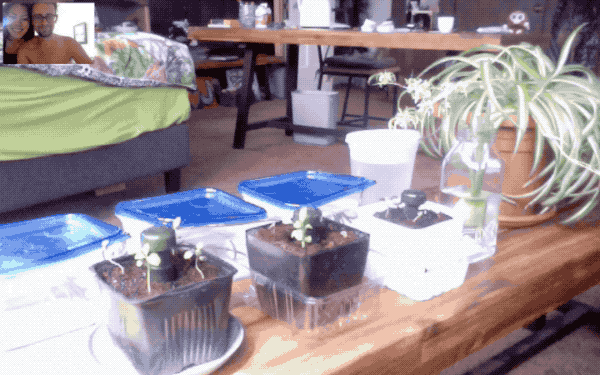Travelling with(out) small seedlings
Travelling with(out) small seedlings
How we kept 20 baby sage plants alive unsupervised for a month and taught them to use FaceTime.
Linzy (my partner!) and I tend to travel a lot. This used to be an intentional act to see the world, but now it’s becoming more of a necessity as we criss-cross the world to see family in Singapore and United Kingdom and attend weddings. Our travel is not too compatible with a new recent love of ours — looking after plants on our new roof garden! Traveling and growing plants didn’t feel like complementing passions, but we have been making this work for us.
To be honest, when we made the decision to fill our home with plants, our choices were based on research into which plants were less likely to die. As someone who’s historically managed to kill two cacti singlehandedly, I was a little apprehensive about the safety of our new potential plants and I wanted to increase their odds of survival. We returned from our nursery trip with two “drought tolerant” lavender plants, a “sun loving” jade tree, a “propagating” spider plant, a “growers friend” sage plant; two “desert loving” succulents and three “Lucky” bamboo stalks. Adjectives help when buying plants that are less likely to die!
Only the “growers friend” sage didn’t survive those first few months. Maybe it was too cold and too young. Maybe it didn’t like the soil. Maybe we’d overwatered it. We declared the now woody stemmed with shriveled leaves baby dead a month after arrival. I was a little sad that this was meant to be a growers friend. Maybe we were not meant to be growers.
As travelers, keeping plants was always going to be a challenge. In December we left the country for 2 weeks. We pondered getting friends to water them while we’re gone, but many of our friends are also the traveling type; we didn’t want to burden anyone and to be honest we were a little worried they’d get over- or under-watered and damage a friendship. So, instead, we experimented with the first self watering system we found on Amazon and took a leap of faith on the basis that it was only 2 weeks and it was raining lots. Only our lavender was looking thirsty on return, but we were able to revive it.
As Spring fell, the spider plant grew happily. It sprouted several new stalks, that we’re told can be used to grow new ones; our lavenders grew purple flowers on the end of long stretching stalks; one of the succulents bloomed dozens of yellow flowers and our jade tree looked no different from how we found it and was joined by some sort of wildflower, that we couldn’t bring ourselves to call a weed and uproot which would later bloom tiny pink buds.
In May we were to leave for Barcelona for a work trip. Going all this way, it seemed silly not to tag on a trip to visit family. Then it felt necessary, given the savings of a work paid trip, to tag on a vacation. When we looked at the time away, we realized we would be gone for a month. This time we were going to take no chances after the lavender plants brush with death.
Month long trips and Perkey Posey’s
Unhappy with our first Amazon plant maintenance purchase, we wanted something better for the Barcelona trip. We experimented with other watering systems until we found one that worked for us — Perky Posey Premium Self Watering Ceramic Probes. We stuck probes into the soil and connected them to recycled plastic water bottles. Linzy spent June tweaking the system, until we could leave relatively confidently for travels in June.
The last few days of vacation, I must confess, I became nervous. Would we return to a plant graveyard?
We returned in June, and although the water bottles were near empty, our plants were happily surviving. We had found a system that worked.
In July, we were to leave for Singapore to attend our brother’s wedding. It takes a while for us to get there, so as I searched for flights, wanderlust kicked in and I got creative. I realized:
- we could make that trip to San Diego we’d been planning and fly San Diego to Singapore
- to break up the journey we could have eight hours transferring in Tokyo (because who doesn’t love a eight hour stopover for food and a visit to a Sentō?)
- since we were traveling so far I decided I got permission from my boss to stay longer, work remotely and explore the local tech scene
- on return we’d have a couple of days in Hong Kong, since it was on the way.
As I took a step back from the booking confirmation and looked at the dates of our travels it was just under a month again. Given our success with the Perky Posey watering system, our plants were going to be fine. However there was one problem, which made this occasion slightly different.
The problem was that I’d possibly got a little over-enthusiastic with our plant growing adventures. While Linzy had begun an interesting experiment regrowing spring onion from the often discarded white root, still sad about the death of the “growers friend” in a moment of madness and curiosity I’d spilt twenty sage seeds at the start of June and they were now beginning to sign of life.
Month long trips and seedlings
While I began to feel a bit silly, about my sage seed experiment, Linzy took control of the system, as she usually does.
Linzy transplanted the seeds from the soil I’d put them in to a egg carton containing water soaked cotton buds — (turns out in the early stages, all plants need is water and soil comes later )— and as they became a little stronger, she transferred them to larger shared pots. Only three of them were too weak to survive. We bought more of the Perky Poseys and then we connected the little saplings up for the last two weeks before our trip to see if they would rely on the system alone and measure their water intake.
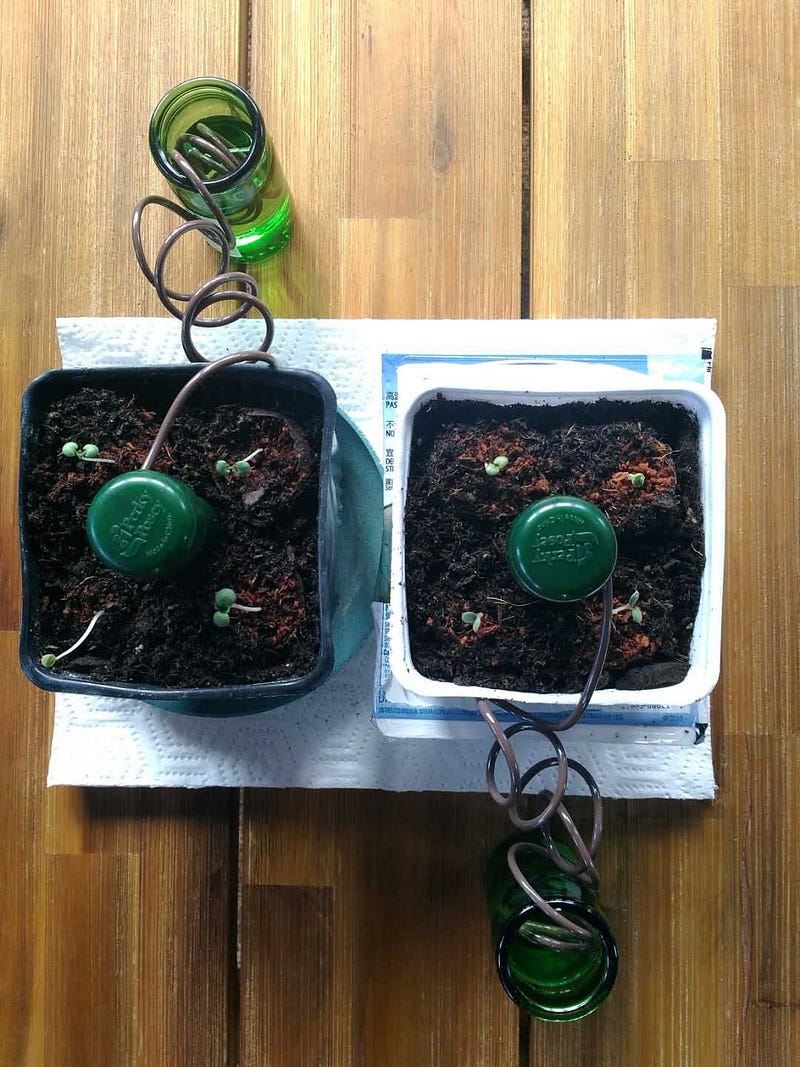
To our relief the newly sprouting plants seemed well enough to rely on our self watering system and we found a spot in our home which would give them just the right amount of light. They needed more water so we gave them larger jars.
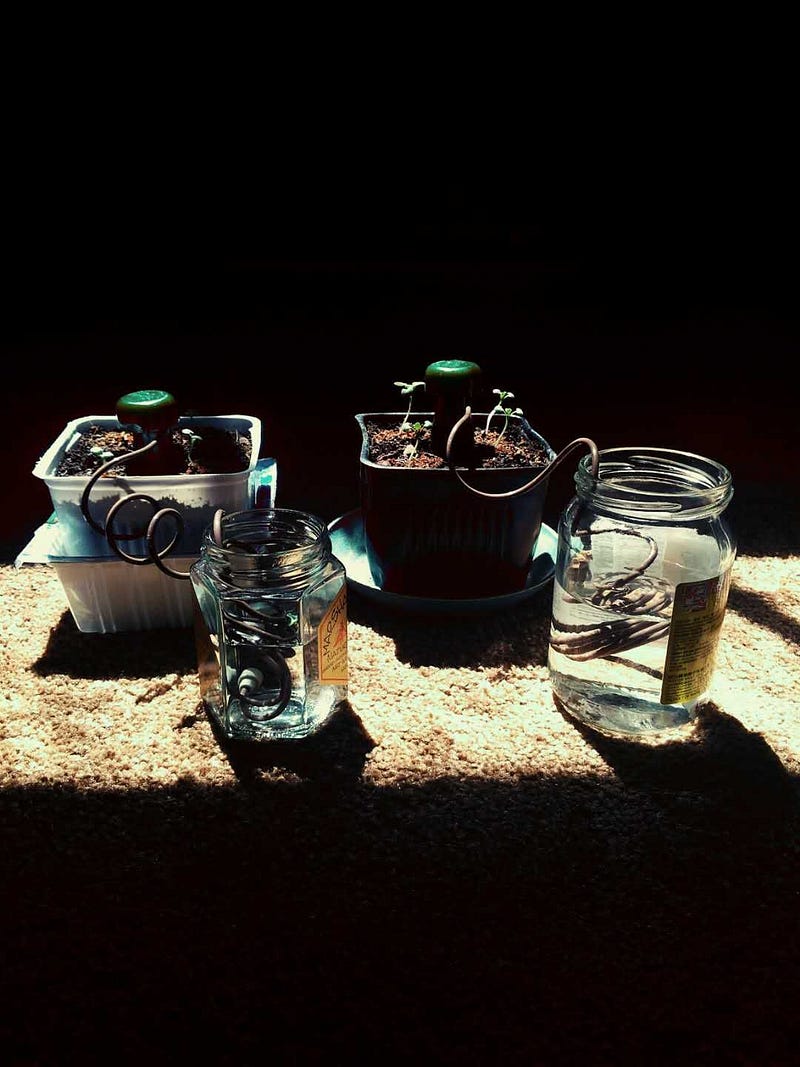
Eventually, we worked out the exact water they needed. We bought some plastic containers from Walgreens. Everything seemed to be falling into place.
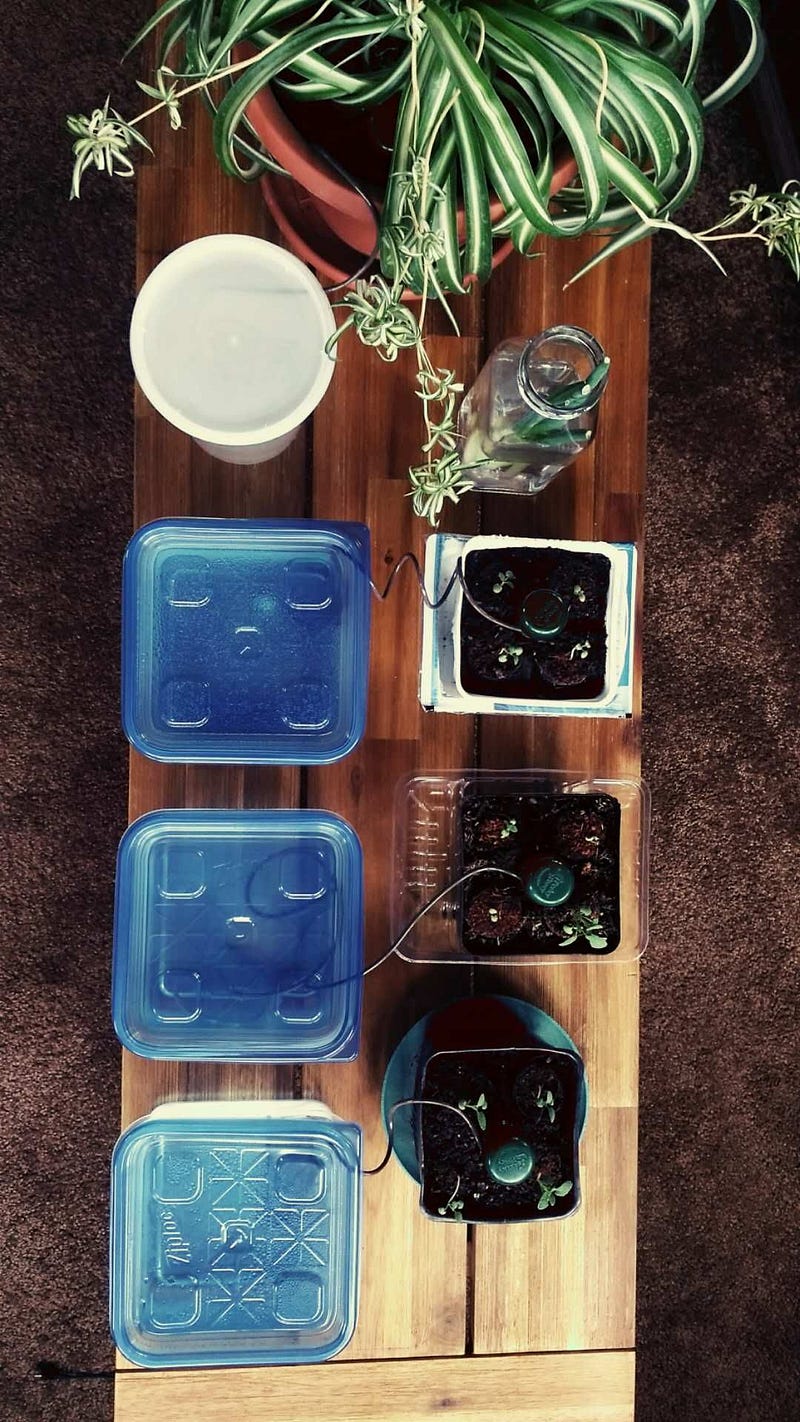
Yet given the age of the plants I was a little more nervous. I wanted to be able to keep an eye on them while we were gone. A couple of days before leaving, I began to get a little nervous about killing so many sage plants. This seemed far worse than the one I had already killed. I didn’t want to be a serial sage killer!
Potentially, if the baby sage plants began to struggle or to run out of water, I could arrange a spare key and their revival. Yet, how to remotely monitor some plants halfway across the world?
Enter FaceTime
I didn’t own a webcam, but I did own an old Mac Book Pro that’s been gathering dust, that is now used occasionally for movie watching. Linzy and I had a FaceTime username each, so I wondered if I could point this laptop at my plants and call them. A little digging into the Internet and I discovered that you can make FaceTime auto-answer calls from a certain number with a very simple command line.
defaults write com.apple.FaceTime AutoAcceptInvitesFrom -array-add <linzyfacetime>@gmail.com
It was my time to experiment. I called it from the kitchen and it appeared to be working! I now had a way to call my plants from halfway across the world. Interestingly, as I looked into this I uncovered various other interesting usages of video calling — to help connect people to relatives with dementia and to create surveillance systems. You can also use an old iPhone or Skype to achieve similar results.
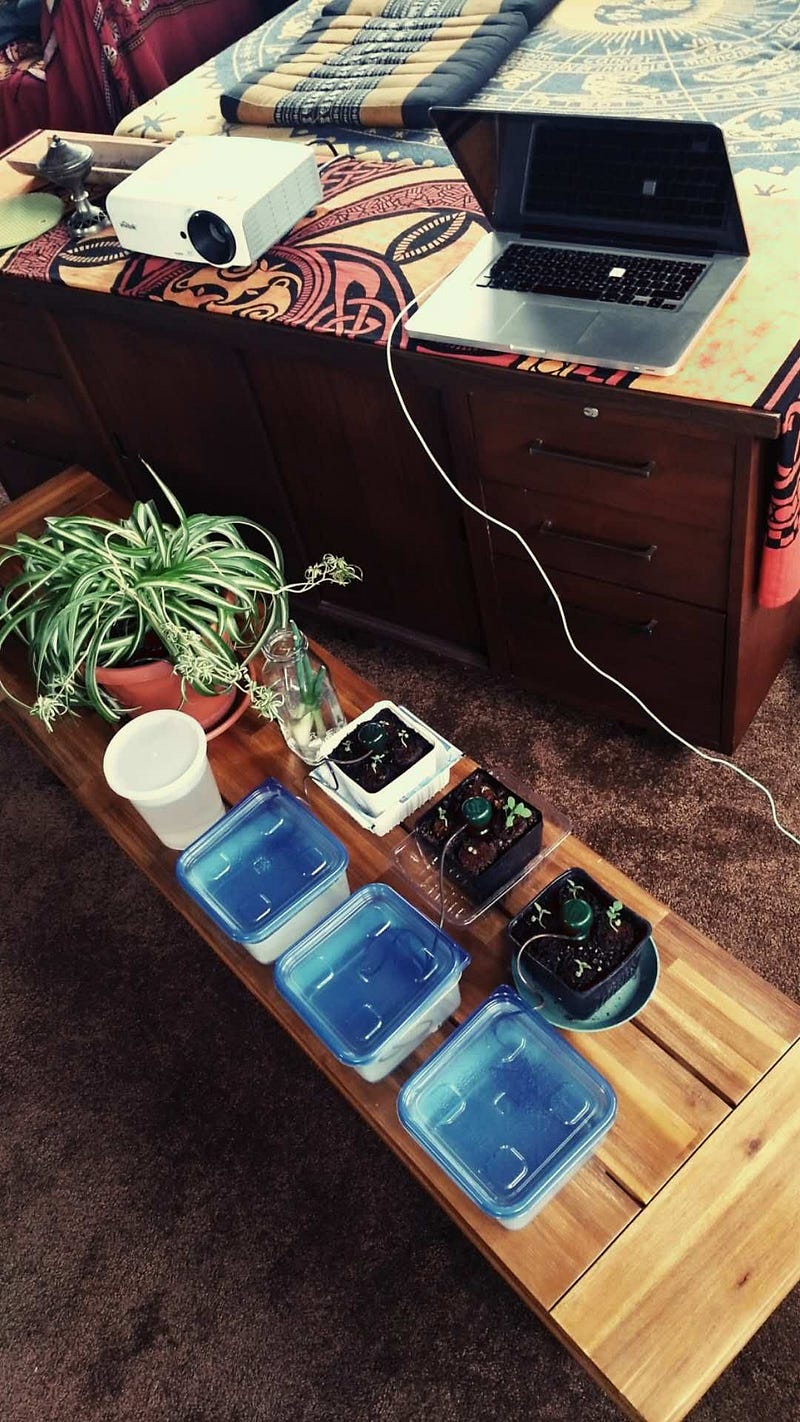
While one problem was solved, another appeared. I didn’t like the idea of leaving my laptop on for 24 hours for an entire month.
FaceTime will not answer calls if the screen saver is on. As I explored Apple’s System Preferences I discovered I could schedule my Mac to turn itself on and off every day using the “Energy Saver” feature. I did some timezone calculations and decided 2 hours would be enough time to call our plants and 4pm to 6pm was probably the best time to do so — coinciding with Singapore mornings (7am-9am).
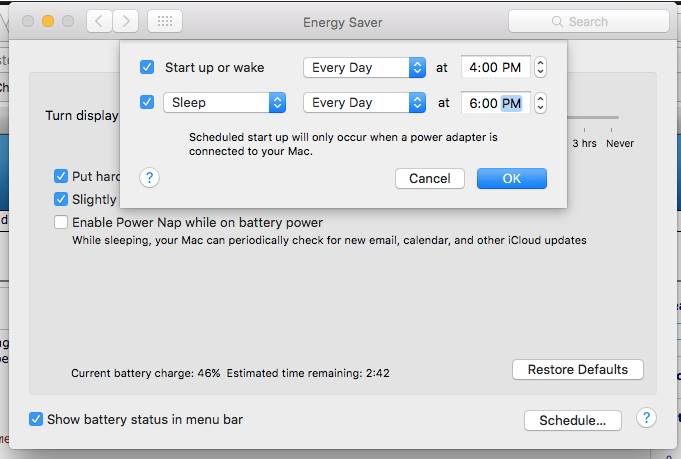
With this simple setup, we left for travels.
The system worked quite well. We rang the plants from San Diego. We watched one of them plop and never recover on day five. We rang them from Singapore. We watched them grow towards the direction of the sun and and watched their water slowly run out (at a comfortable rate). Near the end of the trip, we watched them getting the evening sun, which made it hard to see how they were surviving and as we made our way home, via Hong Kong, we grew excited to touch and inspect them close-up.
Calling the plants became part of our traveling routine and while it was lovely to be abroad it was nice to have a window into the place we called home and to be able to be reassured that home was waiting for our return.
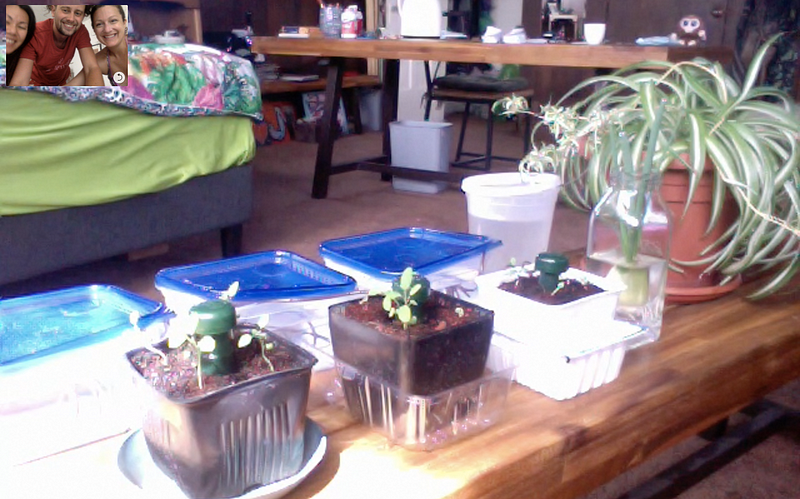
However, what we hadn’t realized, was we’d inadvertently created something even better. Given the fixed position of the plants and the laptop, we could now take screenshots every day of their progress. Through this activity we could tell which ones were not going to survive and which ones were doing well. While on our travels, we could do so knowing our home was just as we left it, and that our plants were enjoying it.
I’ve always felt that travel, is a great way to slow down and see the world through different eyes and through this experiment this became even more meaningful. I reflected, that had we been at home, we probably would have not noticed the small inch of group or the direction of the growth of our little seedlings. Through our plant FaceTiming, we’d not only created a portal from our adventures to our base but we’d captured something beautiful — the slow-paced beauty of nature, that seldom do we see when we’re stuck at home in our own every-day lives.
